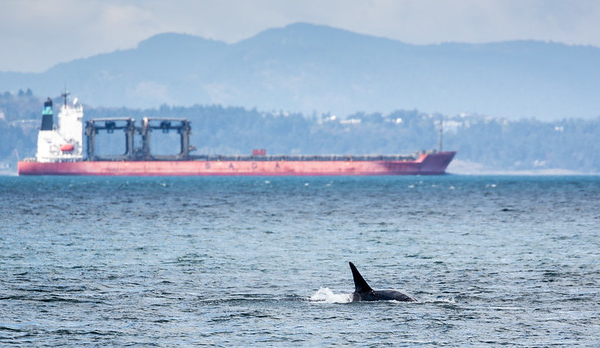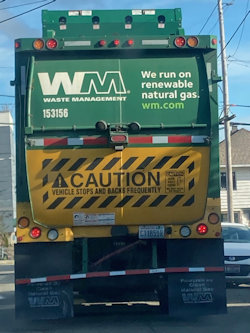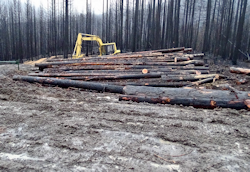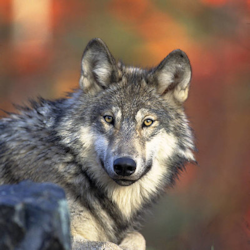SEJournal Online is the digital news magazine of the Society of Environmental Journalists. Learn more about SEJournal Online, including submission, subscription and advertising information.
 |
 |
| Orcas in the salt waters of Washington and British Columbia face problems with their food supply — salmon — which is being harmed by dams on the region's rivers. Above, an orca near San Juan Island in northwest Washington state. Photo: alh1 via Flickr Creative Commons (CC BY-NC-ND 2.0). |
Special TipSheet: Cascadia Bioregion Rife With Energy, Environment Troubles To Report in 2023
By Robert McClure
Western North America has long harbored some of the continent’s most compelling environmental controversies. In 2023, longstanding struggles including the fate of wolves and endangered salmon are destined for more coverage, along with emerging issues such as balancing clean energy needs with Indigenous peoples’ treaty rights.
This special TipSheet, part of the “2023 Journalists’ Guide to Energy & Environment,” offers story ideas across a bioregion known as “Cascadia,” defined by the watersheds of the Fraser and Columbia rivers.
That’s all of Idaho, Washington and Oregon; significant portions of Montana, northern California and British Columbia; and slivers of Wyoming, Nevada, Utah and southern Alaska.
Cascadian stories to watch for in 2023:
Climate and energy
“Natural” gas greenwashing: Proposals to ban installation of new gas stoves, heaters and other appliances have been getting a fair amount of coverage along the Left Coast, with business, real estate and labor groups doing all they can to head off such restrictions. But much remains to be reported about how the gas companies are greenwashing the fact that most “natural” gas is a climate-warming fuel. Early this century it was hailed as a “bridge fuel” to lead us away from higher-carbon coal. But if we’re going to finish crossing the bridge to a truly renewable and climate-friendly energy mix, critics say, that means ending the use of what activists call “fossil gas.” Some reporting has revealed this, such as Rebecca Leber’s reporting for Vox in 2022 and Emily Holden’s takedown of the gas industry’s greenwashing in Seattle for Floodlight and The Guardian. In Oregon, six elected officials and 30 activist groups last year petitioned the state attorney general for an investigation into alleged “misinformation and disinformation“ by the utility NW Natural. What’s happening in your area? Nick Cunningham of DeSmog produced a good backgrounder for anyone wading into this topic. Greer Ryan of Climate Solutions’ Oregon operation knows a lot about this.
 |
| Renewable natural gas can supplement transportation energy sources, like this garbage truck in Seattle. But critics say the gas industry is misleading the public by suggesting all natural gas is renewable. Photo: Robert McClure. |
“Renewable natural gas?”: Sounds great, right? But activists charge that the gas industry is trying to use that phrase to make people think all natural gas is renewable. That’s far from the truth. Only a small amount of the demand can be met by the truly renewable gas emanating from landfills, dairy manure, food waste and similar sources. (And even that emits some greenhouse gases.) Reports by the Oregon and Washington state governments reveal that renewable natural gas, or RNG, is providing a minuscule portion of the gas demand now, and it would cost a bundle to bulk that up. Meanwhile, rates for solar and wind energy have fallen fast and far, and show signs of continuing to do so. This is a complicated issue. Gas coming from landfills and so forth does need to be captured and used, because otherwise it would come out of the ground as the potent greenhouse gas methane. And there’s some promise for using this captured methane for fueling transportation, the largest part of Cascadia’s climate problem. But in terms of scale, RNG is nowhere near a complete answer to replacing gas used today. Laura Feinstein of the Sightline Institute in Seattle has been following this.
Are government leaders keeping their climate commitments?: A GeekWire piece, drawing from a September 2022 report by the Cascadia Innovation Corridor, ticks off 14 actions that Washington, Oregon and British Columbia can take to keep their commitments to slash greenhouse gas emissions. They include reducing peak demand, investing in energy storage, and overcoming resistance to siting of new renewable energy sources such as wind and solar. I also recommend a series I helped edit and write, “Getting To Zero: Decarbonizing Cascadia,” a project spearheaded by Peter Fairley for a partnership including InvestigateWest, Grist, Crosscut.com, Jefferson Public Radio and British Columbia’s The Tyee. The series shows how leaders of Washington, Oregon and British Columbia fell short on their climate-protection promises, and how this can be rectified. If you’re looking for a by-the-numbers assessment of how this can be achieved, at least in Washington state, try Eileen V. Quigley of the Clean Energy Transition Institute, whose work underpins a pivotal 2021 state report. Quigley also has done some work in Oregon and has an idea of what’s going on with other states.
Washington as second state to hold carbon auction: Feb. 28 is the date of Washington’s first auction of carbon credits under a 2021 “cap and invest” law, the second state in the nation to hold such an auction, after California. In both states, the largest greenhouse gas polluters must bid for access to an ever-smaller pool of allowances to emit planet-warming gases. The twist on Washington’s Climate Commitment Act — and why it’s called “cap and invest” — is it uses the revenues to beef up an air pollution-monitoring network, invest in clean energy solutions across the state and help clear the air in communities most affected by air pollution, including communities of color. Ten percent of the money will aid tribes, which were key to passage. Kelly Hall at Climate Solutions is a good person to start with on this story.
Tribes take action on climate but oppose some projects: Keep an eye on what Native American tribes are doing on the climate front. In some cases, tribes are opposing clean energy projects, while in others are some of the strongest proponents for action to slow and adapt to climate change. Examples of the former: The Yakama Nation of Washington state wants to nix a pumped-water storage project designed to complement the transition to a solar- and wind-based electrical grid. That’s because the project would wipe out grounds considered sacred and used for plant gathering. In Nevada, the Fort McDermitt Paiute and Shoshone Tribe is objecting to a mine at the site of the country’s largest known deposit of lithium — for lithium batteries to run electric cars and other purposes — because it would unearth a burial ground for Native massacre victims. In some cases, treaty rights come into play. On the other hand, too many tribes to detail here are taking action on their own on the climate protection and climate adaptation fronts. This piece by British Columbia journalist Nicola Jones for Yale Environment 360 is a worthwhile start on that part of the story.
Smoke and wildfire
Forget thinning the forest — just protect the buildings: The days of thinking we can “prescribe burn” and “thin the forest” our way out of the increasingly destructive wildfires affecting the West are over. “The idea that we can fireproof this huge landscape of flammable material is simply an impossible task,” Colorado researcher Tania Schoennagel says in the soon-to-be-released documentary “Elemental.” “It’s like trying to scoop … water out of the ocean to make it less wet.” One 2014 study predicted a 60% increase in Western “megafires” by 2050. So, what is the answer? Mostly hardening buildings in fire-prone areas by, for example, not using construction materials that will catch on fire if embers hit them. As for thinning and burning? Given the funding available versus the vast areas of forests, this kind of activity could be concentrated around settled areas instead of the remote locations where prescribed burns and thinning usually now happen. In that way, resources saved on scattershot thinning and burning are instead used to help make buildings less vulnerable when the inevitable fire occurs. A good source to start on this story is Ralph Bloemers, producer of “Elemental,” which was directed by Trip Jennings. (“Elemental” will be playing in Boise, April 20, during the upcoming Society of Environmental Journalists annual conference there. SEJournal has a review here. Sign up for an April 20 screening in Boise or for a Feb. 15 online screening for SEJ members. I am also organizing a panel on this topic for the SEJ Boise conference in April.)
 |
| Scientific studies show salvage logging is ecologically harmful and hurts the climate. Above, salvage logging after a 2020 wildfire in Oregon. Photo: Francis Eatherington via Flickr Creative Commons (CC BY-ND 2.0). |
Can we escape the smoke-a-geddons?: Forthcoming research by Pacific Northwest National Laboratory researchers Ruby Leung and Sally Wang forecast a 186% increase in Western particulate pollution from wildfires in the decades to come. With climate change grinding away, many Westerners ask: Is this inevitable? Sadly, the answer is: Probably so. It’s doubly discouraging to learn that the standard advice — to stay indoors — is not very protective of human health, especially in sensitive groups (people with heart and lung disease, older adults, children, people with diabetes and people of lower socioeconomic status). In fact, one study anticipates a doubling of deaths related to wildfire smoke by 2050. Research led by University of Washington researcher Dan Jaffe shows that merely staying indoors often does not appreciably reduce concentrations of pollutants people encounter. To some degree, the smoke often seeps in. More steps can be taken, such as setting up a “clean room” where one runs HEPA filters. And, perhaps surprisingly, avoiding vacuuming, which stirs up dust that contains microscopic PM 2.5 particle pollution. Jaffe has said that current attitudes toward unhealthy smoke are “lackadaisical,” and calls for greater public attention to this public health threat. Simple steps like DIY box-fan filters can make a big difference to health outcomes, especially for sensitive groups.
“Salvage” logging hurts the climate: We as journalists are largely missing a major climate story in the West: so-called “salvage” logging of forests in the wake of wildfires. After timber lobbyist Mark Rey got Congress, in a must-pass budget bill in the mid-1990s, to order the Forest Service to encourage this practice, a series of scientific studies showed it is, in general, ecologically harmful. (A few years later, Rey was appointed to head the Forest Service under President George W. Bush.) The untold story today is that scientists over the last 10-15 years have shown salvage logging is — painting with a broad brush — a minus for climate protection. Recommendations for sources: Beverly Law of Oregon State University, who has actually measured the amount of carbon coming off forests both old and young; Jerry Franklin of the University of Washington; Mark Harmon of Oregon State University; and Chad Hanson of the California-based John Muir Project.
Wildlife
Salmon: Author Tim Egan defined the Pacific Northwest as “wherever the salmon can get to.” Salmon knit together Cascadia, because after their adult lives in the Pacific Ocean, they must return to spawn near the coast, farther east in the rain-drenched mountains or in the inland deserts beyond. Endangered species listings are now decades old for many salmon runs, offering an opportunity to probe what is working and what is not. Ask wildlife authorities what is being done about the four main threats: destruction of habitat through shoreside development; removal of shade trees and other factors; blocking fishes’ passage to spawning grounds with dams and improperly installed culverts (the pipes that carry streams under roads); harvesting of the fish; and hatcheries that, while well-intentioned, actually harm the genetic fitness of wild salmon. One of the main threats to these cold-water fish is increasingly warming waters that prevent them from spawning. A good source to start: the recent report “State of Salmon in California,” especially the section on habitat. Also see David Montgomery’s excellent book “King of Fish.”
 |
| The reintroduction of the gray wolf is a hot-button in the region, with polls showing public support, but more complex views in affected rural areas. Photo: Gary Kramer, U.S. Fish and Wildlife Service. |
Orcas: Undoubtedly the most controversial current story about orcas is actually about their food: salmon. The West’s biggest salmon runs historically came out of the Snake-Columbia river system. Those fish were crucial to the survival of a charismatic group of orcas called “southern residents” that frequent the salt waters of Washington and British Columbia. But dams built on the rivers harmed salmon in myriad ways. For years, conservationists have sought to disable and punch holes through four dams on the Snake River, which scientists say would help restore the river to original flow patterns and boost the number of salmon. But conservationists’ efforts have failed. Agricultural and shipping interests, among others, say they would be hurt economically. Dams keep the water levels artificially high, allowing agricultural products and other materials to be barged from far inland. Another factor: the dams produce a decent amount of power, mostly without greenhouse gas emissions. In the latest big development in this sprawling and enormously complicated story, Idaho Rep. Mike Simpson, a Republican, fashioned a plan to breach the dams while paying to replace the benefits. Good background on orcas and the salmon connection is in the Seattle Times’ “Hostile Waters” series by Lynda Mapes.
Wolves: This hardy perennial of an issue seems never to grow old or unimportant, nor to lose the interest of readers, viewers and listeners. It’s a hot-button struggle increasingly influenced, like it or not, by culture wars. Ryan Devereaux of The Intercept and Paige Williams of The New Yorker produced admirable in-depth pieces in 2022. It’s important to remember in reporting this story that although polls have shown strong support for reintroducing wolves, many of those polled are not in touch with the rural folks most directly affected. Journalists who aim to shed light instead of heat should amply flesh out both sides. Ask how much is being done to discourage wolves from attacking livestock before the wolves are killed, which is a primary point of conflict. The actions of state wildlife regulators who authorize kills in these circumstances, and who decide how many wolves can be taken by hunters each year, are worthy of watchdogging.
Robert McClure is a veteran journalist specializing in in-depth coverage of climate and energy issues. He previously co-founded InvestigateWest, a nonprofit newsroom in Seattle, where he served as executive director and executive editor, and worked in newspapers for 30 years before that. A finalist for a Pulitzer Prize and winner of the John B. Oakes Award for Distinguished Environmental Journalism, McClure was named as one of Seattle Magazine’s “most influential people” in the city. He was also the recipient of professional fellowships funded by the Knight Foundation that allowed him to study at the University of Michigan, MIT and Harvard. He served on the Society of Environmental Journalists' board of directors for 12 years and continues to serve as chair of the SEJ Editorial Advisory Board.
* From the weekly news magazine SEJournal Online, Vol. 8, No. 5. Content from each new issue of SEJournal Online is available to the public via the SEJournal Online main page. Subscribe to the e-newsletter here. And see past issues of the SEJournal archived here.














 Advertisement
Advertisement 



